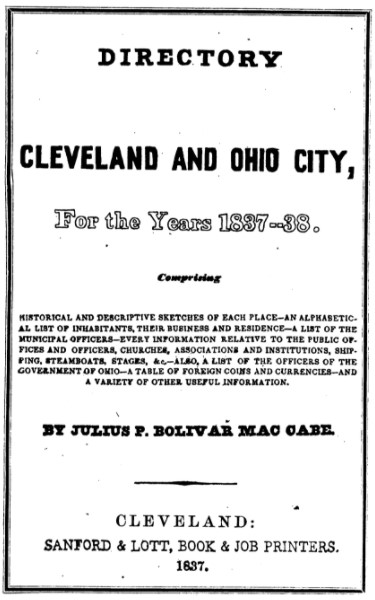Cleveland's First Infrastructure:
The Ohio & Erie Canal
Section 4: The Canal Era
Luxury goods...canal excursions...
-
The first 59 pages of the city's first directory, published in 1837, clearly demonstrate a change in the lives of Clevelanders, evident from the many advertisements for luxury goods, "splendid style" hotels and transportation, fine china, and fashionable dry goods, "convenient not only to the passenger, but to many of the business men in the lower part of the city."
-
MacCabe, J. P. Bolivar. (1837). A directory of the cities of Cleveland & Ohio, for the years 1837-38: comprising historical and descriptive sketches of each place ...
Cleveland: Sanford & Lott.
Once the Ohio & Erie Canal was open to navigation, change came swiftly to the towns along its route, and the effects were felt in surrounding areas as well. Commerce flowed from the eastern centers through Cleveland to the interior.
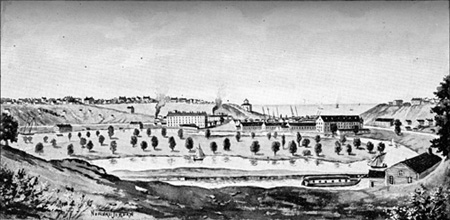
The valley of the Cuyahoga in 1846 (from A History of the City of Cleveland: Its Settlements, Rise and Progress, 1796-1896, by James Harrison Kennedy, facing page 146.)
The city grew in size, wealth and influence. The alterations to the landscape of Cleveland may be seen in this 1846 illustration of the Cuyahoga valley.
Akron, located at a stairway of locks which slowly carried boats up to the summit, also benefited from canal travel.
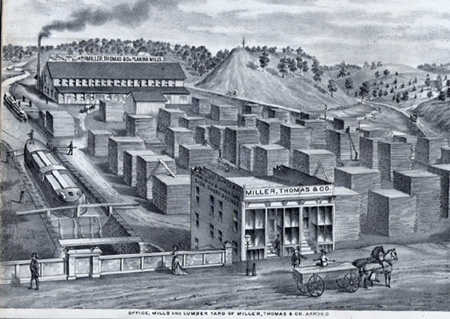
Above: this illustration from 1874 shows the Ohio & Erie Canal passing alongside the lumberyard of Miller, Thomas & Co., of Akron.
Combination atlas map of Summit county, Ohio, compiled, drawn and published from personal examinations and surveys, by Tackabury, Mead & Moffett, 1874.
(Courtesy of Map Collection, Cleveland Public Library.)
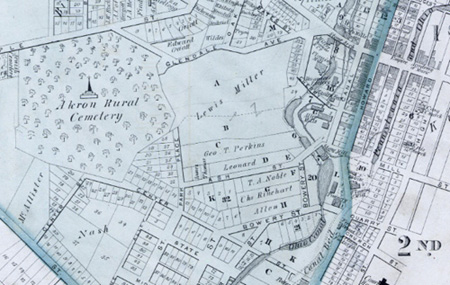
Above: The Ohio & Erie Canal runs through Akron's Third Ward in this map from Tackabury, Mead & Moffett's Combination atlas map of Summit county, Ohio.
Combination atlas map of Summit county, Ohio, compiled, drawn and published from personal examinations and surveys, by Tackabury, Mead & Moffett, 1874.
(Courtesy of Map Collection, Cleveland Public Library.)
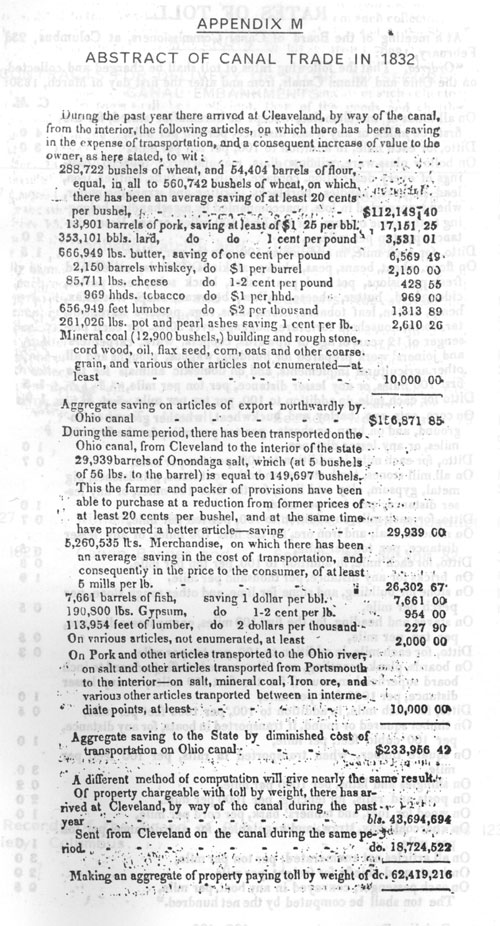
Ohio & Erie Canal runs through Akron's Third Ward
Farmers found that reliable transportation to markets made it profitable to grow more cash crops. Other manufacturers also benefited. An abstract of trade on the Ohio & Erie Canal during 1832, the year of its completion, illustrates the quantities and types of goods shipped.
With greater access to raw materials, and fueled by water power from the canal system, industries grew and developed along the Ohio & Erie. New possibilities and challenges had come to Ohio with the canals.
Cleveland's First Infrastructure is a project of Cleveland State University Library Special Collections, and was made possible by a grant from the Cleveland Section of the American Society of Civil Engineers. It seems appropriate that this exhibit, which highlights the achievement of civil engineers of the early 19th century, premiered during National Engineers Week and on the eve of the birthday of military engineer and land surveyor George Washington. We hope that this site will serve as a gateway through which people can learn about the canal, identify resources for further investigation of canal engineering and history, and find opportunities to visit preserved areas of the Ohio & Erie Canal in Ohio.

